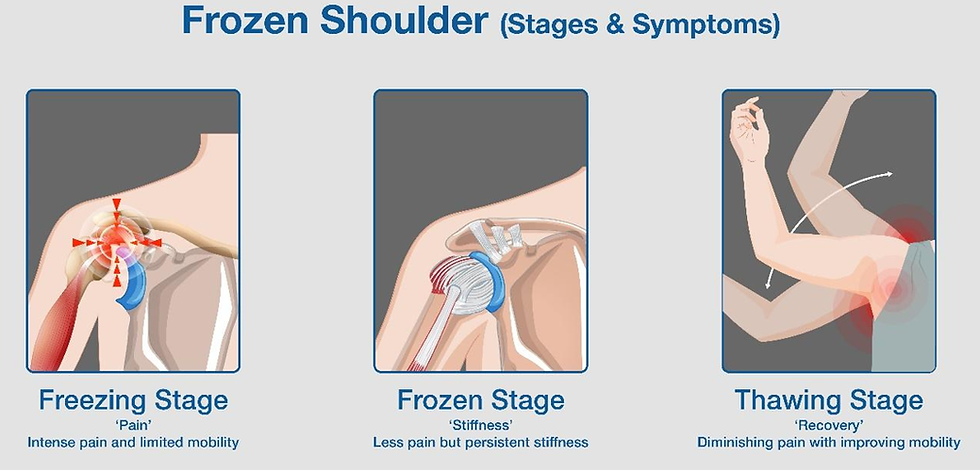The Cold Hard Facts of Frozen Shoulder.
- ELIZAAN NEL

- Sep 29
- 2 min read
Frozen shoulder, often referred to as Adhesive Capsulitis, is a hotly debated topic within the scientific literature.

It is an inflammatory condition which causes fibrosis of the glenohumeral shoulder joint capsule, progressing to gradual stiffness and restriction of the shoulder joint range of movement.
The onset can start from no attributable reason, or it can result from a known cause, surgical event, or predisposing factor. For example, post-shoulder surgery, post-stroke, or due to a systemic condition like diabetes mellitus.
70% of individuals presenting with Frozen shoulder are female. Emerging research suggests that withdrawal of oestrogens during perimenopause may be an important risk factor.
Frozen shoulder progresses through three clinical phases, which overlap:

Acute/freezing/painful phase: Gradual onset of shoulder pain, night pain, lasting anywhere from 2-9 months. For pain relief, physiotherapy modalities such as gentle shoulder joint mobilisation, gentle muscle releases, dry needling, and Kinesio taping can assist during this phase of painful inflammation.
Adhesive/frozen/stiffening phase: Pain is subsiding, decreased range of motion, occurs around 4 months and lasts until about 12 months. Physiotherapy can assist with improving joint range of movement, strength, and function with joint mobilisation and stretches, muscle release techniques, dry needling and gentle exercises.
Resolution/thawing phase: Lasting anywhere from 5-24 months, spontaneous, progressive improvement in functional range of motion. Physiotherapy can assist with progressive exercises for strengthening.
Therefore, the literature suggests interventions should be tailored to the stage of the disease based on its progressive nature. Improving one’s quality of sleep will have a massive benefit on pain relief, but also on one’s emotional state.
The strongest evidence at the moment suggests that physiotherapy (manual therapy and exercise) should be used in addition to a corticosteroid injection.




Comments